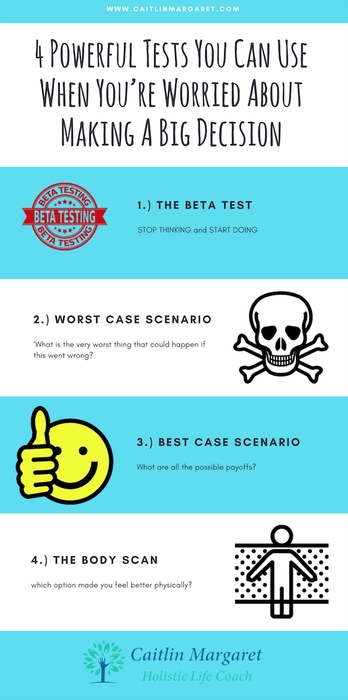There are two kinds of fears in life: There are the fears that keep you alive, and the fears that keep you from living.
The first kind of fear is based on rational, sound judgement (either conscious or unconscious). It’s the fear, for example, that makes you jump out of the street when a car is coming. Or it’s that weird spider sense in your belly telling you to take a different route home today, only to find out later that there was a major accident on your normal route that could have cost your life. These fears keep you alive.
But then there’s the fear that keeps us from living. For example, remember that time you had a really cool idea for a product or service, but feared it wouldn’t succeed, so you just tucked it away under bed….then 1 year later saw someone making millions of that idea? Or perhaps that time when you decided to stop dating completely because you fear you’ll just get caught up in the same unhealthy pattern again. That locked you out of intimacy and held you back from living a life of love – a life you truly wanted to live!
So, how can you tell if the worry you’re feeling about doing something is your intuition protecting you, or a sign of a comfort zone you need to break through?
In this video below, I talk you through four empowering strategies that can help you decide.
Here’s a summary of the 4 techniques I described in the video.

Test 1: The Beta
This test can be summarized in just 5 words: STOP THINKING and START DOING.
Before you order a bottle of wine, you get a taste test, right? Apply this to every important decision in your life! Thinking about switching careers? Try a part-time internship in your new field first. Want to move to China? Head there for a 1-month vacation first. The truth is, clarity comes from engagement, not from analysis. And you’ll only truly know you like something when you try it.
Test 2: Worst Case Scenario
Most people have a chronic tendency to overestimate the risks associated with their fears. Our brains are wired by evolution to make fast judgments which are not always backed up by logical reasoning. So, this test asks you to take a more objective look at your fear by asking ‘What is the very worst thing that could happen if this went wrong?’ Would the consequences really be so dire that you couldn’t bounce back? That you would tragically injure yourself or others?
Think concretely about all the things that could go wrong. And then write down how you would deal with these consequences. How would you get back on your feet? Be as specific as possible.
Chances are, you’ll realize that you can totally take this leap of faith, and come out stronger on the other end, whether your win or lose. But if you’ve done the analysis and that’s not the case, then you’ve got your answer: don’t do it.
Test 3: Best Case Scenario
For this test, we’re flipping the last scenario on its head. Instead of focusing on the fear, think about the best things that could come out of you pursuing this particular decision. What are all the possible payoffs? How can you see yourself living if this goes well?
Once you’ve gotten clear on the best possible results, ask yourself: Am I willing to live without this outcome? If so, then maybe it’s not worth doing. But if you can’t possibly imagine your life being fulfilled without this outcome, then your path is obvious, my friend
Test 4: Body Scan
Our minds are not the only parts of us that carry wisdom, so do our bodies. To a certain extent, you already know how to listen to your body: you can identify hunger, thirst, and the urge to go to the bathroom. But your body has a whole lot more than that to tell you. This fourth test helps you listen to and interpret the sensations in your body to guide you toward what you need.
Here’s how it’s done: Think about two different options available to you with your big decision. Focusing on the first option, close your eyes, and begin to picture yourself pursuing that path. Visualize and breathe with this experience for a few moments. Now, notice how your body feels, particularly your throat, chest, and shoulders. Do you feel expansive or contracted? Expansive feels like when you’re playing with a puppy or holding a baby. It feels open-hearted and light. Contracted feels heavy, tight, limited, and darker.
Go through this same process for the second option. Then reflect: which option made you feel better physically? Which one helped you expand? Chances are, that’s the right one.
—
Did these tests help you with any big decisions you’re working through? Which one did you find most helpful? Share your insights and thoughts in the comments below.

I love the Beta test idea!
Thanks dear.. 🙂